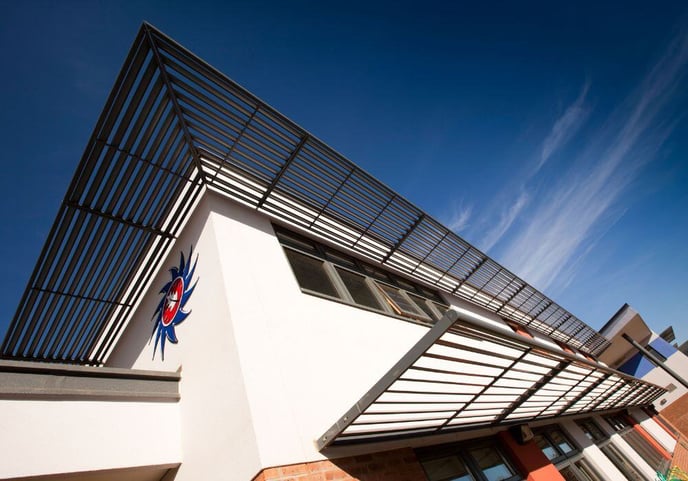What factors should be considered when designing brise soleil?
Before installing a brise soleil system, design considerations such as material selection and local climate should be accounted for.

In a nutshell:
• The building’s orientation affects how much sunlight hits the façade and therefore the brise soleil design.
• Climate and geography also have an effect as sunnier locations require a more extensive system.
• Aluminium is a popular choice for brise soleil as it is durable, flexible and attractive.
• Blades can be optimised through correct spacing and angle placement to achieve effective shading.
• An effective brise soleil system can help achieve net zero goals by reducing solar glare while still allowing in natural light.
When designing a brise soleil system, there are several key factors to consider to ensure that it performs effectively while still adhering to the building’s overall architecture.
Building Orientation
The building’s orientation is a crucial consideration as it affects the angle and intensity of sunlight that hits the façade. For example, south-facing façades typically receive the most sunlight during the day, making horizontal blades more effective for blocking high-angle sunlight. Whereas east and west-facing façades often experience lower-angle morning or afternoon sun and therefore require vertical fins or a combination of horizontal and vertical blades for effective performance.
Local Climate and Sun Path
Another factor to consider is the geographical location and local climate of the building. Hot, sunny climates obviously require a more extensive shading system to reduce solar heat gain, while in cooler climates, some sun exposure might be beneficial to allow passive solar heating during colder months.
Also, taking into account the sun’s path throughout the year helps optimise the blade angles and placement for maximum shading during peak summer months while allowing light in during the winter.
Material Selection
Brise soleil systems can be made from a range of materials, each of which impacts durability and aesthetics.
Aluminium is the most common choice due to its durability, low maintenance and sleek appearance. Timber is also a popular option as it provides a warmer, natural aesthetic. Although, timber typically requires greater maintenance and can create installation challenges due to its weight.
Blade Effectiveness
A brise soleil system consists of blades which alleviate glare and heat gain by blocking out sunlight therefore these blades must be optimised for the system to work effectively. The spacing between the blades determines how much sunlight is allowed in and the gradient of the blades should be based on the angle of sunlight throughout the day. Deeper blades can also provide greater shading, however, also affect the amount of natural light entering the building.
Natural Light Considerations
Even though a brise soleil system is designed to reduce solar glare, an effective system will also be able to strike that balance between shading and allowing in natural light. Brise soleil systems are regularly incorporated into Net Zero developments as they reduce the need for cooling systems by reducing heat gain, although if designed and installed effectively, they also reduce the need for artificial lighting.